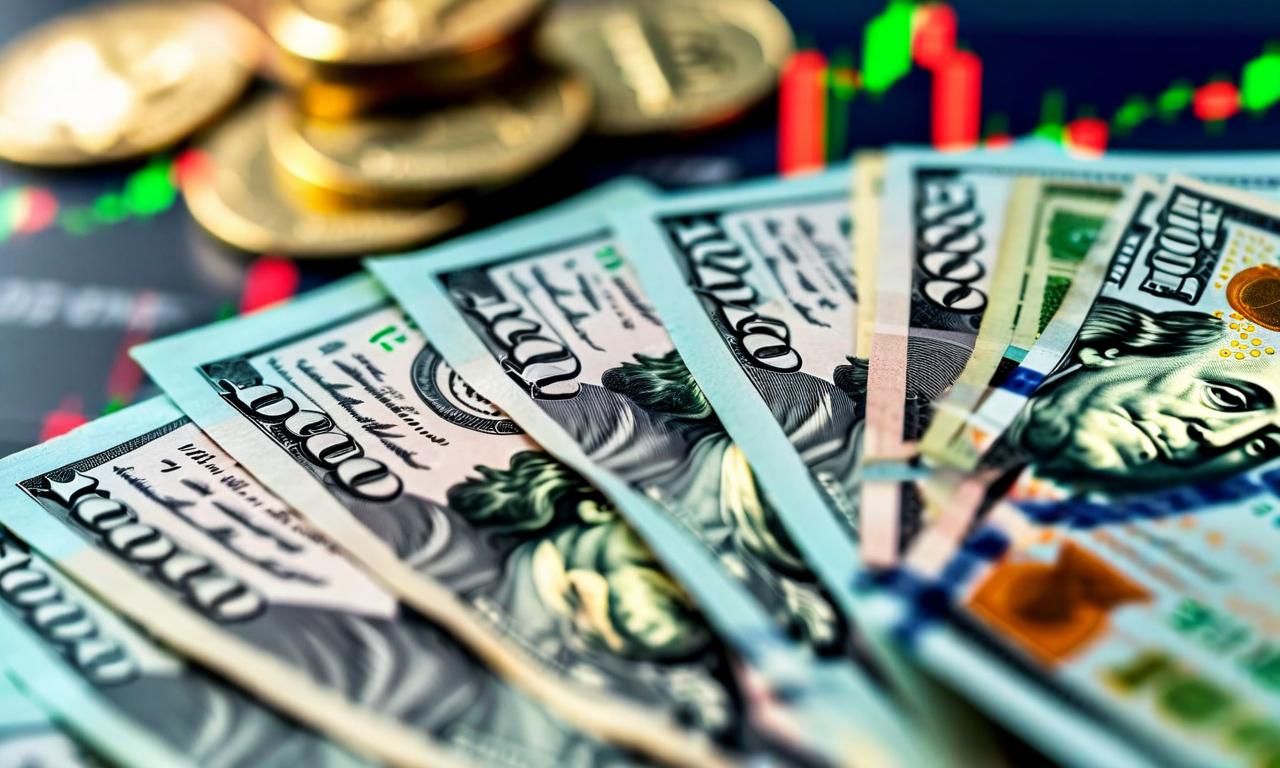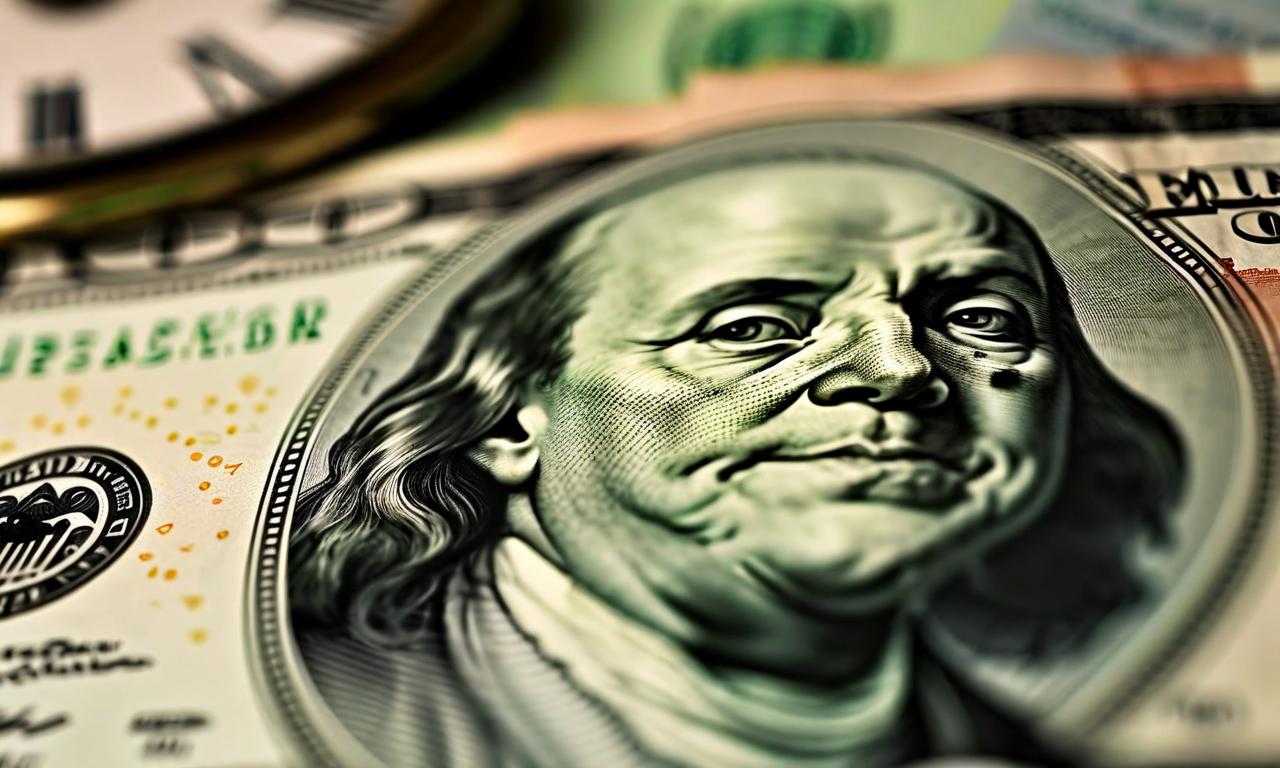Dollar Weakens as Markets Anticipate Further Rate Cuts, Despite Fed's Cautious Tone
The US dollar has declined to near its weakest level in almost a week, with the dollar index dropping to 97.23, a 0.50% weekly decrease. This weakness is driven by market expectations of two more quarter-point rate cuts this year and another in Q1 2026, despite Fed Chair Powell's cautious stance on further monetary easing. The dollar eased against the yen and euro but slipped versus the Australian dollar. The divergence between market expectations and the Fed's communicated position is contributing to the dollar's current weakness.

*this image is generated using AI for illustrative purposes only.
The US dollar has experienced a notable decline, reaching levels close to its weakest in nearly a week, as market participants increasingly expect additional interest rate cuts from the Federal Reserve. This sentiment persists despite cautionary remarks from Fed Chair Jerome Powell regarding further monetary easing.
Dollar Index Drops
The dollar index, which measures the greenback against a basket of major currencies, fell to 97.23. This represents a 0.50% decrease for the week, driven by market expectations of two more quarter-point rate cuts in the remaining Fed policy meetings this year, with an additional cut anticipated in the first quarter of 2026.
Powell's Cautious Stance
Fed Chair Jerome Powell emphasized the central bank's complex task of balancing competing risks. He described the current policy situation as 'challenging,' highlighting the need to navigate between concerns of high inflation and a potentially faltering job market.
Currency Movements
The dollar's performance against other major currencies reflects its overall weakness:
| Currency | Movement |
|---|---|
| Japanese Yen | The dollar eased 0.04% to 147.59 yen |
| Euro | Edged up to $1.1816 |
| Australian Dollar | Slipped to $0.6598 |
Market Expectations vs. Fed's Position
Despite Powell's cautious tone, market participants appear to be pricing in a more dovish outlook for US monetary policy. This divergence between market expectations and the Fed's communicated stance is contributing to the dollar's current weakness.
Recent Fed Action
The dollar had previously rebounded from its early 2022 lows of 96.22 following the Fed's recent quarter-point rate reduction and Powell's subsequent news conference. However, this recovery appears to have been short-lived as markets continue to anticipate further easing.
As global economic conditions evolve and central banks adjust their policies, currency markets remain sensitive to shifts in interest rate expectations and economic outlooks. Investors and analysts will be closely monitoring upcoming economic data and Fed communications for further clues on the trajectory of US monetary policy.

















































